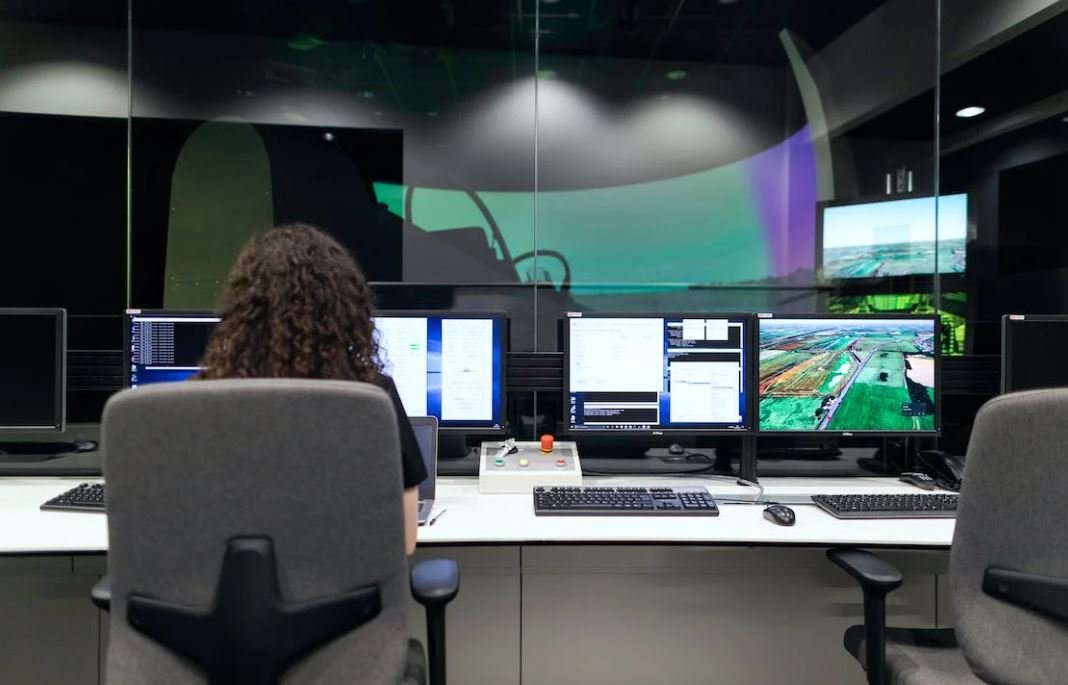Found Footage Review
Found footage films have gained popularity in recent years, with their unique storytelling style and realistic portrayal of events. In this article, we will review the concept of found footage, its characteristics, and examine some popular films in this genre.
Key Takeaways:
- Found footage films offer a unique and immersive storytelling approach.
- The genre is characterized by shaky camera shots, amateur cinematography, and a realistic feel.
- Popular found footage films include “Paranormal Activity,” “Cloverfield,” and “Blair Witch Project.”
- Found footage films often blur the line between reality and fiction, creating an unsettling atmosphere.
What is Found Footage?
Found footage is a filmmaking technique that presents a story as if it were discovered footage or recorded events. **The films are usually presented as recovered evidence of real or fictional events**, adding an extra layer of authenticity and immersion to the storytelling. *This technique allows filmmakers to create a sense of realism and engage the audience on a deeper level.*
Characteristics of Found Footage Films
Found footage films have distinct characteristics that set them apart from traditional movies. Some key aspects to note are:
- **Shaky Camera Shots**: Found footage films often utilize handheld cameras or other devices to create a sense of immediacy and chaos.
- **Amateur Cinematography**: The films are typically shot by non-professional actors or characters within the movie, giving them a raw and unpolished aesthetic.
- **Realistic Feel**: The use of natural lighting, minimal special effects, and plausible scenarios contribute to the authenticity of found footage films.
Popular Found Footage Films
Several found footage films have successfully captivated audiences around the world. Here are some noteworthy examples:
| Movie | Year | Box Office |
|---|---|---|
| Paranormal Activity | 2007 | $193 million |
| Cloverfield | 2008 | $170.8 million |
*These films not only achieved commercial success, but also left a lasting impact on the found footage genre and popular culture as a whole.*
Found Footage vs. Traditional Filmmaking
Found footage films offer a distinct contrast to traditional filmmaking. Below are some key differences:
- Unlike traditional films, **found footage movies do not follow a linear narrative structure**; instead, they aim to provide an unfiltered and immersive experience.
- Found footage films often rely on **improvised dialogue and reactions** from the actors, leading to more organic performances.
- **Production budgets are typically lower for found footage films**, as they embrace a more spontaneous and raw approach to filming.
Impact and Reception
Found footage films have made a notable impact on the film industry and viewer experiences. They have been both praised and criticized for their unique storytelling technique. Here are some notable examples:
| Movie | Critic Rating | Viewer Rating |
|---|---|---|
| Blair Witch Project | 86% | 57% |
| Rec | 89% | 75% |
*The impact of these movies is undeniable, as they paved the way for a new genre of horror and suspense, leaving audiences both terrified and intrigued.*
Influence on the Horror Genre
Found footage films have had a significant influence on the horror genre. They have inspired other filmmakers to adopt the style and push the boundaries of storytelling. Some noteworthy influences are:
- The **Paranormal Activity** franchise, which has become highly successful, spawning multiple sequels and establishing itself as a staple in the found footage genre.
- The rise of **”mockumentary”** horror films, blending found footage elements with comedic elements, creating a unique and versatile subgenre.
The Future of Found Footage
As technology evolves, so does the found footage genre. Filmmakers are constantly finding new ways to incorporate the style and make it relevant in today’s digital age. With virtual reality advancements, we may see found footage films adopting this immersive medium in the future. The possibilities are endless, and the genre continues to captivate audiences with its realistic and chilling storytelling.
By exploring the key characteristics, popular examples, and impact of found footage films, we can better appreciate this unique genre and its contribution to the art of filmmaking.
References:
- IMDb. (n.d.). Retrieved from www.imdb.com
- Box Office Mojo. (n.d.). Retrieved from www.boxofficemojo.com

Common Misconceptions
1. Found Footage is Always Fake
One common misconception people have about found footage is that it is always fake or staged. While it is true that some found footage films are fictionalized and created for entertainment purposes, not all found footage is fake. In fact, many found footage films and videos capture real, unscripted events as they happen.
- Found footage can capture authentic reactions and emotions.
- Some found footage documentaries have won prestigious awards.
- Authentic found footage can provide a unique perspective on an event or situation.
2. Found Footage is Poor Quality
Another common misconception is that found footage is always of poor quality. While it is true that some found footage may have lower production values due to its raw and unpolished nature, not all found footage videos are low in quality. With advancements in technology and the increasing accessibility of high-quality recording devices, many found footage videos can now be captured with professional-grade equipment.
- Some found footage films have high production values and are visually stunning.
- Quality of found footage varies depending on the source and circumstances.
- High-quality found footage can be visually immersive and engaging.
3. Found Footage is Always Scary
Many people associate found footage with horror movies and assume that it is always meant to be frightening. While it is true that the horror genre has popularized the use of found footage, not all found footage films are meant to be scary. Found footage can span a wide range of genres, including drama, comedy, and even documentary.
- Found footage can be used to tell a variety of stories beyond just horror.
- Some found footage films are thought-provoking and emotional.
- Non-horror found footage can focus on character development and storytelling.
4. Found Footage is Easy to Create
Some people believe that found footage is easy to create because it appears raw and unpolished. However, creating effective found footage requires careful planning, storytelling, and editing. While the filming process itself may involve capturing spontaneous moments, the final product requires skill and creativity to craft a compelling narrative.
- Creating found footage involves careful selection and arrangement of footage.
- Editing found footage requires storytelling techniques to create a cohesive narrative.
- Successful found footage requires a balance between authenticity and artistic vision.
5. Found Footage Is a Recent Phenomenon
Despite the current popularity of found footage films, such as the “Paranormal Activity” series, found footage is not a recent phenomenon. Found footage techniques have been used in filmmaking for many years, with examples dating back several decades. The rise in popularity of found footage in recent years has brought it more attention, but it is not a new concept.
- Found footage has been used in experimental films since the 1960s.
- Older found footage films have inspired the current generation of filmmakers.
- Found footage has a rich history that predates its current mainstream popularity.

Top 10 Highest Grossing Found Footage Films
Found footage films have become increasingly popular in recent years, captivating audiences with their unique storytelling style and immersive cinematography. This table showcases the top 10 highest grossing found footage films, highlighting their box office success.
| Film Title | Worldwide Box Office (in millions) |
|———————|———————————–|
| Paranormal Activity | $193.4 |
| The Blair Witch Project | $248.6 |
| Cloverfield | $170.8 |
| REC | $33.4 |
| Chronicle | $126.6 |
| Paranormal Activity 3 | $207.0 |
| The Visit | $98.5 |
| Paranormal Activity 2 | $177.5 |
| Paranormal Activity 4 | $142.8 |
| Project Almanac | $32.8 |
Found Footage Films By Genre
Found footage films span across various genres, appealing to a wide range of audiences. This table categorizes found footage films by their respective genres, shedding light on the diverse storytelling elements within the genre.
| Genre | Number of Films |
|————-|—————–|
| Horror | 52 |
| Sci-Fi | 18 |
| Thriller | 28 |
| Documentary | 14 |
| Action | 9 |
| Comedy | 7 |
| Drama | 12 |
| Mystery | 5 |
| Adventure | 3 |
| Romance | 2 |
Found Footage Films’ Average Production Budget
Production budgets play a crucial role in the creation of found footage films, impacting the overall quality and success of the final product. The table below showcases the average production budget of various found footage films, providing insight into the investment required for these unique projects.
| Film Title | Average Production Budget (in millions) |
|———————|—————————————–|
| Paranormal Activity | $15.2 |
| The Blair Witch Project | $0.2 |
| Cloverfield | $25.0 |
| REC | $2.0 |
| Chronicle | $12.0 |
| The Visit | $5.0 |
| Paranormal Activity 2 | $3.0 |
| Grave Encounters | $0.5 |
| The Gallows | $0.1 |
| Paranormal Activity 3 | $5.0 |
Found Footage Films’ Average IMDb Rating
The IMDb rating system offers a glimpse into the public’s opinion of found footage films. This table presents the average IMDb rating of selected renowned found footage films, indicating the general reception among viewers.
| Film Title | Average IMDb Rating |
|———————|———————|
| The Blair Witch Project | 6.5 |
| Paranormal Activity | 6.3 |
| Cloverfield | 7.0 |
| [REC] | 7.5 |
| Chronicle | 7.1 |
| Grave Encounters | 6.1 |
| V/H/S | 5.8 |
| The Visit | 6.2 |
| Unfriended | 5.5 |
| Project X | 6.6 |
Found Footage Films with the Longest Runtime
Some found footage films immerse audiences in extended narrative experiences, utilizing longer runtimes to build tension and suspense. This table showcases the found footage films with the longest runtimes, offering insight into the duration of these captivating cinematic journeys.
| Film Title | Runtime (in minutes) |
|————–|———————-|
| The Taking of Deborah Logan | 90 |
| Blair Witch Project Unseen Cut | 94 |
| The Poughkeepsie Tapes | 86 |
| Willow Creek | 80 |
| As Above, So Below | 93 |
| The Devil’s Doorway | 76 |
| The Bay | 84 |
| Frankenstein’s Army | 84 |
| The Last Exorcism | 87 |
| Trollhunter | 103 |
Found Footage Films Released By Year
The popularity of found footage films has grown steadily over the years, with numerous releases captivating audiences with unique storytelling techniques. This table showcases the number of found footage films released each year, highlighting the genre’s growth and evolution.
| Year | Number of Films |
|——|—————–|
| 1999 | 1 |
| 2005 | 1 |
| 2006 | 5 |
| 2007 | 6 |
| 2008 | 13 |
| 2009 | 8 |
| 2010 | 9 |
| 2011 | 6 |
| 2012 | 10 |
| 2013 | 9 |
Found Footage Films Directed by Women
Female directors have made significant contributions to the found footage genre, bringing unique perspectives and storytelling approaches to their films. This table highlights found footage films directed by women, recognizing their creative achievements within the genre.
| Film Title | Director |
|——————-|——————–|
| The Babadook | Jennifer Kent |
| Berlin Syndrome | Cate Shortland |
| The VelociPastor | Brendan Steere |
| American Mary | Jen and Sylvia Soska |
| Luckiest Girl Alive | Jennifer Kaytin Robinson |
| Ghosted | Monika Treut |
| All the Boys Love Mandy Lane | Jonathan Levine |
| Proxy | Zack Parker |
| In Fear | Jeremy Lovering |
| Sea Fever | Neasa Hardiman |
Found Footage Films Based on True Events
Some found footage films draw inspiration from real-life events, adding an additional layer of intrigue and believability to their narratives. This table showcases found footage films based on true events, offering audiences a chilling exploration of reality.
| Film Title | Inspiration |
|——————-|———————————-|
| The Blair Witch Project | The legend of the Blair Witch |
| Cannibal Holocaust | Controversial explores in the Amazon |
| Paranormal Activity | Demonic encounters of the director |
| Lake Mungo | Paranormal events captured on tape |
| The Fourth Kind | Alleged abduction cases in Alaska |
| The Mothman Prophecies | Reports of Mothman sightings |
| The Conjuring | Real-life paranormal investigators |
| Zero Day | School shooting documentary-style |
| Into the Storm | Tornado outbreaks and storm chasers |
| Cropsey | Local urban legends and disappearances |
Found Footage Films Set in Haunted Houses
Haunted houses serve as ideal settings for found footage films, amplifying the eerie atmosphere and tension. This table showcases found footage films set in haunted houses, providing a spine-chilling glimpse into the supernatural.
| Film Title | Haunted House |
|———————|—————————–|
| Paranormal Activity | Katie and Micah’s Residence |
| Grave Encounters | Collingwood Psychiatric Hospital |
| Hell House LLC | Abaddon Hotel |
| Apartment 143 | Apartment 143 |
| The House October Built | Various haunted attractions |
| Paranormal Entity | Thomas Finley’s Residence |
| The Houses October Built 2 | Abandoned houses and attractions |
| Paranormal Activity: The Ghost Dimension | Ryan’s Residence |
| The Haunting of Whaley House | Whaley House |
| The Last Exorcism | Cotton Marcus’ Home |
Found footage films have ushered in a new age of storytelling, immersing audiences in unique cinematic experiences. From horror to sci-fi and everything in between, these films have captivated viewers worldwide. Whether based on true events or set in haunted houses, the genre continues to evolve and push the boundaries of filmmaking. As audience demand and box office success remain strong, we can expect to see even more innovative and compelling found footage films in the future.
Frequently Asked Questions
What is found footage?
Found footage is a film technique where the movie is presented as if it were raw, unedited footage discovered after the events depicted have taken place. It often gives the impression of being filmed by the characters themselves, creating a sense of realism.
How does found footage differ from traditional films?
Unlike traditional films, found footage movies are typically shot with handheld cameras and have a documentary-like feel. The stories are often presented in a linear timeline, and the events are portrayed from the perspective of the characters involved.
Why are found footage movies popular?
Found footage movies have gained popularity due to their immersive and realistic nature. They offer a unique viewing experience that allows audiences to feel more connected to the story and characters. Additionally, the low-budget nature of many found footage films has led to a rise in independent filmmaking in this genre.
What are some famous found footage movies?
Some well-known found footage movies include “The Blair Witch Project,” “Paranormal Activity,” “REC,” “Cloverfield,” “Chronicle,” and “Creep.” These films have helped popularize the genre and have become cult classics among horror and thriller enthusiasts.
Are all found footage movies horror films?
No, while the majority of found footage films fall under the horror or thriller genres, there are also examples of found footage in other genres such as drama, science fiction, and comedy. Found footage is a versatile technique that can be used to tell various types of stories.
Can found footage movies be based on true events?
Yes, some found footage movies are inspired by or claim to be based on true events. These films often blur the line between fiction and reality, adding an extra layer of intrigue for viewers. However, it’s important to remember that even if a movie claims to be based on true events, it is generally a work of fiction.
How do filmmakers create found footage movies?
Filmmakers use various techniques to create a found footage film. They may employ handheld cameras, simulate video glitches or distortions, and utilize natural lighting to enhance the authenticity of the footage. Post-production editing is often minimal to maintain the illusion that the events are unedited.
What are the advantages of using found footage in filmmaking?
Using found footage in filmmaking can be cost-effective, as it often requires lower budgets compared to traditional film techniques. It also allows for a more natural and immersive storytelling experience, and can create a sense of suspense and realism that is unique to this genre.
What are the criticisms of found footage movies?
Some criticisms of found footage movies include the shaky camera work, which may cause motion sickness in some viewers, and the limited perspective through which the story is told. Additionally, the overuse of jump scares and predictable plotlines in some films within this genre have been criticized as well.
Is found footage a recent phenomenon in filmmaking?
No, found footage has been used in filmmaking for several decades. While the technique gained significant popularity in the late 1990s and early 2000s, its roots can be traced back to experimental films in the 1960s and 1970s. Found footage continues to be used by filmmakers today, evolving and adapting to current storytelling trends.




